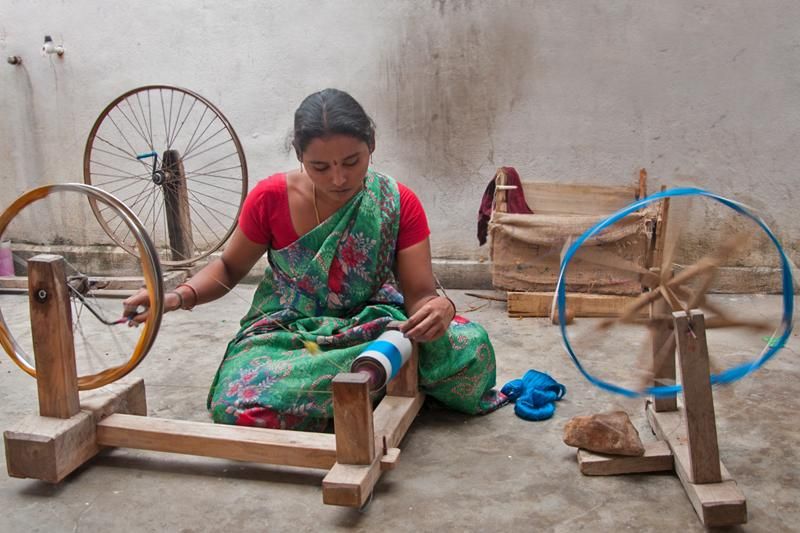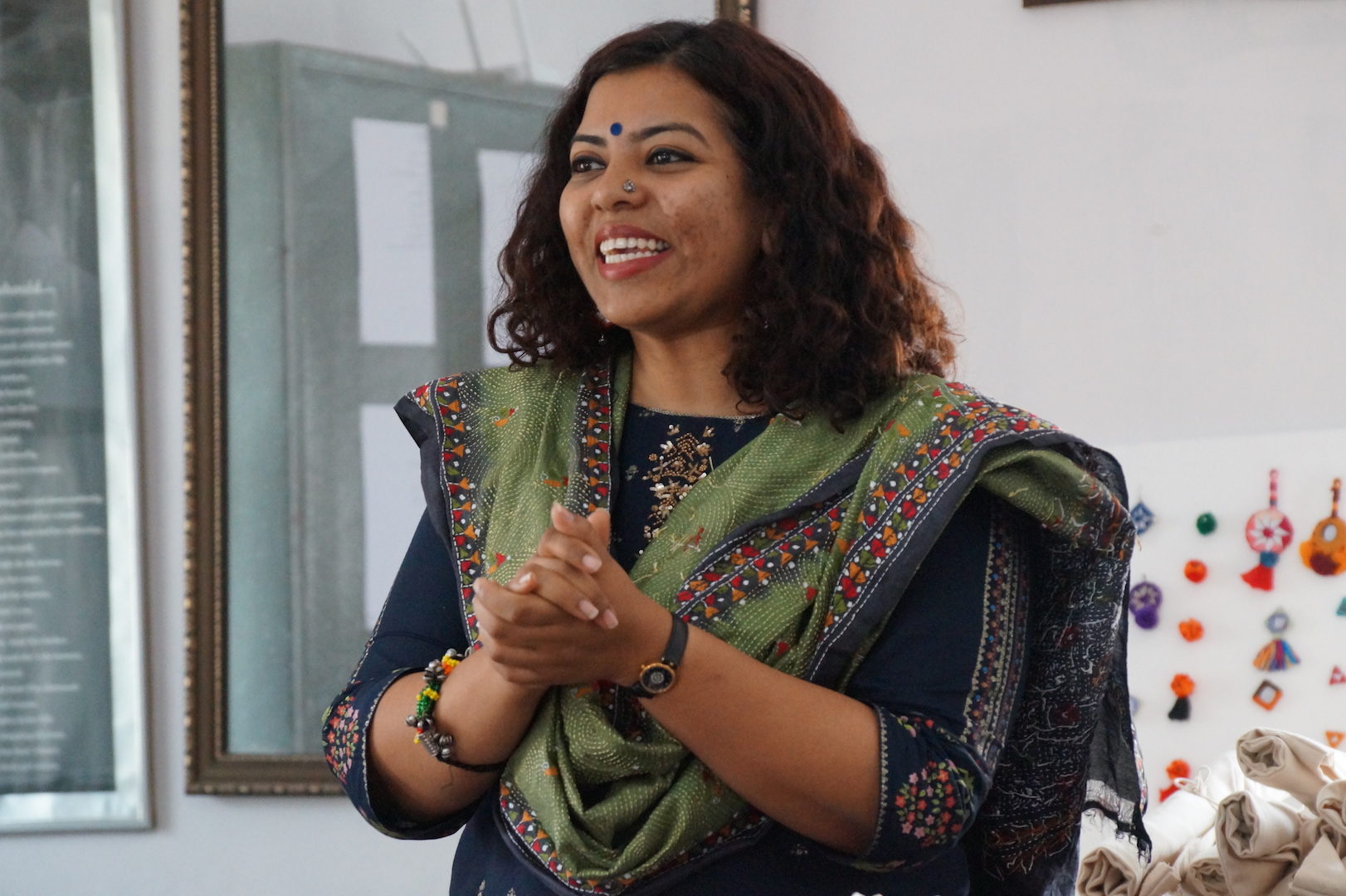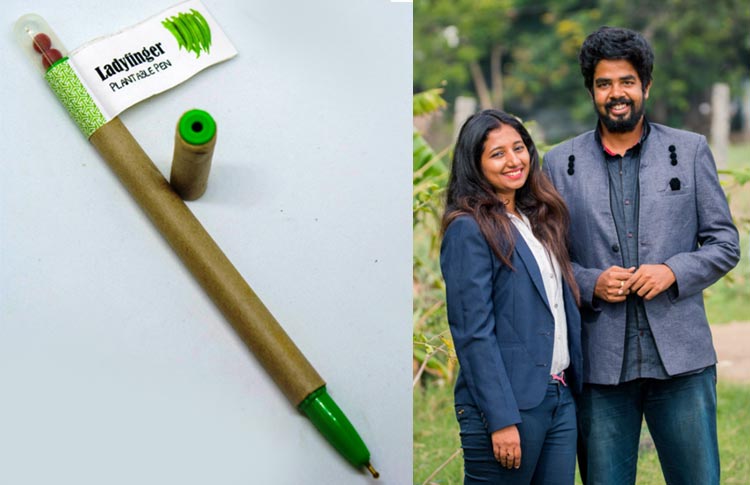We Believe Humans Are The Most Important Entity, But I Urge People To Look At Other Species Too: Shreya Dasgupta
- IWB Post
- April 19, 2019

The famous artist Leonardo Da Vinci once said, “Water is the driving force of all nature.” He had realized the value of water in an era when its depletion wasn’t a matter of concern. But today, as we stand on the brink of driving our limited fresh water sources into extinction, it is high time we pay attention to its grave importance.
In an attempt to spread more awareness around water conservation, the one-of-its-kind eco-festival Maahiroj is back in full force with its 6th edition on the theme of Water – the force of all nature. Presented by AnanTaya Decor, Maahiroj, literally translating to Earth Day Every Day, is an experience of unearthing the planet’s potential for sustainability in collaboration with like-minded designers and artisans from across the country. The festival aims at bringing forward the important issue of water crisis affecting millions of people around the world and the fact that around 844 million people are still devoid of this basic necessity.
Shedding more light on the need of environmental conservation, science and environment writer Shreya Dasgupta engaged in a Twitter chat with IWB. A former wildlife researcher, she writes about animals, conservation, biology, people and places. Her work has appeared in BBC Earth, New Scientist, Ensia, The Scientist, The Guardian, and others.
Excerpts:
On the agenda for #EarthDay2019
Shreya Dasgupta on Twitter
@indianwomenblog @AnantayaDecor #MaahiRoj2019’s theme of water conservation is an important one. If I were to set an agenda, it would be Earth for all – We tend to believe that humans are the most important entity in the world, but I would urge people to look at other species we share our planet with.
Shreya Dasgupta on Twitter
@indianwomenblog @AnantayaDecor Pay attention not just dogs, cats. But see the birds, lizard, frogs, trees, bees, lakes, rivers, snakes. Once you start paying attention, it’s easy to fall in love with all that’s around you. And that could stir you to take steps towards protecting them #MaahiRoj2019 (2/2)
On Community-managed forests
Login on Twitter
Welcome back to Twitter. Sign in now to check your notifications, join the conversation and catch up on Tweets from the people you follow.
Login on Twitter
Welcome back to Twitter. Sign in now to check your notifications, join the conversation and catch up on Tweets from the people you follow.
Login on Twitter
Welcome back to Twitter. Sign in now to check your notifications, join the conversation and catch up on Tweets from the people you follow.
Shreya Dasgupta on Twitter
@indianwomenblog @AnantayaDecor @mongabay Generally speaking, though, we found that community-based forest management does not seem to worsen forest loss and might even improve forest cover. Whether the strategy actually improves livelihoods or not, isn’t clear based on existing research #MaahiRoj2019 (3/n)
Shreya Dasgupta on Twitter
@indianwomenblog @AnantayaDecor @mongabay Overall, though, it really depends on what area you’re looking at, what kind of community is involved, what powers they hold, who’s making decisions in the community or outside, and so on. You can read our detailed analysis here https://t.co/H6iPpcOvIe #MaahiRoj2019 (4/4)
On limiting the ruthless deforestation and uprooting the tribal inhabitants for business
Login on Twitter
Welcome back to Twitter. Sign in now to check your notifications, join the conversation and catch up on Tweets from the people you follow.
Shreya Dasgupta on Twitter
@indianwomenblog @AnantayaDecor @mongabay But how this damage can be contained is something I’m not an expert in and don’t have an answer to. But there are several journalists like Aruna Chandrasekhar @aruna_sekhar who report on these issues extensively, and may have better answers than I can give 🙂#MaahiRoj2019 (2/2)
On journalists becoming silent activists by reporting on matters of national importance
Login on Twitter
Welcome back to Twitter. Sign in now to check your notifications, join the conversation and catch up on Tweets from the people you follow.
On the barriers one faces in nature conservation
No Title
No Description
On being a woman adding to the grief of the existing barriers, red-tapism and bureaucracy
Shreya Dasgupta on Twitter
@indianwomenblog @AnantayaDecor @mongabay @aruna_sekhar Definitely. That’s a huge barrier. Some women like Priya Singh @greenchough successfully cross these barriers, but it’s definitely not easy.
On involvement of women
Shreya Dasgupta on Twitter
@indianwomenblog @AnantayaDecor @mongabay @aruna_sekhar @greenchough Like all other fields, involving women at all levels is crucial. Women and men relate to nature and natural resources differently, and women are major stakeholders of natural resources. So for conservation to be effective, including women is essential. #MaahiRoj2019 (1/n)
Shreya Dasgupta on Twitter
@indianwomenblog @AnantayaDecor @mongabay @aruna_sekhar @greenchough There have been some recent examples of changes. Women have been hired as forest guides in Chhattisgarh, and as forest guards in Kerala and Gir in Gujarat. There are several women who join IFS, some of whom go on to take on leadership roles.
No Title
No Description
Shreya Dasgupta on Twitter
@indianwomenblog @AnantayaDecor @mongabay @aruna_sekhar @greenchough The more women we have at all levels with actual decision making power, the more we will see strategies evolve, which could lead to more equitable conservation. I’ll give a shoutout to @mongabayindia’s series on women & the environment https://t.co/O6JancWg89 #MaahiRoj2019 (4/4)
On making tribal inhabitants the strongest allies for nature conservation
Shreya Dasgupta on Twitter
@indianwomenblog @AnantayaDecor @mongabay @aruna_sekhar One thing that I’ve found during my work is that no two people or communities are the same. In fact, no two people within the same community are the same. So what works in one place may not work in another, even if it’s just 50 km away.
Shreya Dasgupta on Twitter
@indianwomenblog @AnantayaDecor @mongabay @aruna_sekhar Also, how we see a forest may not be how someone else sees it. So understanding people’s culture and history and how they relate to forests or grasslands or rivers is crucial. #MaahiRoj2019 (2/n)
Shreya Dasgupta on Twitter
@indianwomenblog @AnantayaDecor @mongabay @aruna_sekhar That can take years of work, but if you do begin to understand the community, the dynamics within their society, then you can go about trying to find (creative) ways to work together to protect their forests/grasslands/wildlife. #MaahiRoj2019 (3/n)
Shreya Dasgupta on Twitter
@indianwomenblog @AnantayaDecor @mongabay @aruna_sekhar There are some great examples out there. For instance, Punima Barman @DeviBarman has been doing excellent work with women in Assam to protect the not-so-charismatic greater adjutant bird. #MaahiRoj2019 (4/n)
Shreya Dasgupta on Twitter
@indianwomenblog @AnantayaDecor @mongabay @aruna_sekhar @DeviBarman Similarly, Aparajita Datta @AparajitaDatta4 has been working with communities in Arunachal Pradesh to protect hornbills – all using unconventional, creative ways. #MaahiRoj2019 (5/n)
Shreya Dasgupta on Twitter
@indianwomenblog @AnantayaDecor @mongabay @aruna_sekhar @DeviBarman @AparajitaDatta4 Last year, I wrote about a new community reserve in Arunachal https://t.co/TYnJb9p3UO. Again, that involved years of discussions between the Bugun tribe, researchers and forest dept to finally find a way to protect a critical portion of the community’s forest #MaahiRoj2019 (6/n)
Shreya Dasgupta on Twitter
@indianwomenblog @AnantayaDecor @mongabay @aruna_sekhar @DeviBarman @AparajitaDatta4 If by autonomy you mean granting rights to forest dwellers, intuitively and morally, it makes good sense. But speaking strictly from an evidence point of view, I’m not sure what research says about how granting rights impacts extent of protection #MaahiRoj2019 (7/7)
On her series on Conservation Effectiveness
Shreya Dasgupta on Twitter
@indianwomenblog @AnantayaDecor @mongabay @aruna_sekhar @DeviBarman @AparajitaDatta4 For the series, we looked at what scientific evidence says about effectiveness of six conservation strategies: forest certification, payments for ecosystem services, community forest management, terrestrial protected areas, marine protected areas, & advocacy #MaahiRoj2019 (1/n)
Shreya Dasgupta on Twitter
@indianwomenblog @AnantayaDecor @mongabay @aruna_sekhar @DeviBarman @AparajitaDatta4 We also looked at how 4 conservation groups – WWF, Conservation International (CI), the Wildlife Conservation Society (WCS), and The Nature Conservancy (TNC) – use evidence inform their decisions and if they evaluate the impact of their projects #MaahiRoj2019 (2/n)
Shreya Dasgupta on Twitter
@indianwomenblog @AnantayaDecor @mongabay @aruna_sekhar @DeviBarman @AparajitaDatta4 While these strategies have been around for decades and are all frequently prescribed around the world, we found that there’s a lot we don’t know about how effective they really are. #MaahiRoj2019 (3/n)
Shreya Dasgupta on Twitter
@indianwomenblog @AnantayaDecor @mongabay @aruna_sekhar @DeviBarman @AparajitaDatta4 We saw some recurring patterns: There is a lot more research on how the strategies affect forest cover than on other aspects of environment, like say, hunting or biodiversity. #MaahiRoj2019 (4/n)
On putting research into implementation for nature preservation
Shreya Dasgupta on Twitter
@indianwomenblog @AnantayaDecor @mongabay @aruna_sekhar @DeviBarman @AparajitaDatta4 Research is getting better, scientists are increasingly collaborating. But at the end of the day, everyone needs to be accountable. Even conservation projects, especially since there’s such limited money. #MaahiRoj2019 (1/2)
Shreya Dasgupta on Twitter
@indianwomenblog @AnantayaDecor @mongabay @aruna_sekhar @DeviBarman @AparajitaDatta4 And for that to happen, it would be good if people worked towards gathering whatever evidence they can, given the resources they have, and then using it to see if what they’re doing is working or not. #MaahiRoj2019 (2/2)
On political parties not prioritising environment, nature conservation, and water crisis
Shreya Dasgupta on Twitter
@indianwomenblog @AnantayaDecor @mongabay @aruna_sekhar @greenchough @MongabayIndia Environment does find some mention in many parties’ mandates this year. My colleagues at @Mongabayindia have been following elections and the environment closely and have discussed these in detail https://t.co/eS6UhD88Yl #MaahiRoj2019 (1/n)
Shreya Dasgupta on Twitter
@indianwomenblog @AnantayaDecor @mongabay @aruna_sekhar @greenchough @MongabayIndia BJP’s manifesto, for example, promises to reduce air pollution in 102 polluted cities by at least 35% over the next 5 years. It talks about giving Himalayan states financial assistance to protect forests. But some of their wording is problematic. #MaahiRoj2019 (2/n)
Shreya Dasgupta on Twitter
@indianwomenblog @AnantayaDecor @mongabay @aruna_sekhar @greenchough @MongabayIndia For eg. it says they’ve ensured speedy environmental and forest clearances, for which they’ve added 9,000 sq km of forest cover to the country – all in the same line. #MaahiRoj2019 (3/n)
Shreya Dasgupta on Twitter
@indianwomenblog @AnantayaDecor @mongabay @aruna_sekhar @greenchough @MongabayIndia Congress manifesto again talks about tackling air pollution, but does not give any specific targets. It also talks about working to protect biodiversity in the Himalayas and the Western Ghats, while protecting livelihoods of the people living there. #MaahiRoj2019 (4/n)
Shreya Dasgupta on Twitter
@indianwomenblog @AnantayaDecor @mongabay @aruna_sekhar @greenchough @MongabayIndia It also talks about protecting the coast and fishing communities, and specifically addresses laws governing forests and local communities living in forests. It also promises to increase the forest cover from 21% to 25% by the year 2025. #MaahiRoj2019 (4/4)
Shreya Dasgupta on Twitter
@indianwomenblog @AnantayaDecor @mongabay @aruna_sekhar @greenchough @MongabayIndia Of course, whether the parties will actually deliver on what they promise remains to be seen #MaahiRoj2019 (6/6)
With water memories, meditations walk, and various workshops on food and art being a part of the eco-festival Maahi Roj on Monday, April 22, it will also have in store some exciting activities for people like the Drum circle, film screenings, testing your own tap water and much more. The 10-day festival, from April 19-29 (11am -10pm), will be held at AnanTaya, The Kanota Courtyard, Narain Niwas Palace Hotel, Jaipur.
To support this remarkable festival, Indian Women Blog is taking an initiative to make the voices of women heard and to highlight their representation in policy-making as inclusive stakeholders of the planet. Stay tuned for some fun activities as we reach out to people to awaken their spirit of conservation.
This initiative is supported by Poornima University and Pearl Academy, both of which passionately believe that the future of design is tied umbilically to the future of our planet.
- 0
- 0












